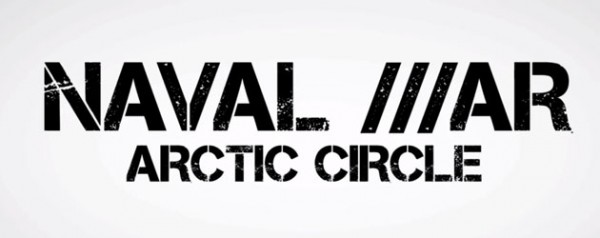Before I delve into details or specifics, there’s something I should get out of the way. Naval War: Arctic Circle scares me. Staggering in its complexity, this is not a “pick up and play” game, nor is this your average fast-paced RTS. You’re not going to get “Eurofighter-rushed” by your multiplayer opponent, and you won’t be losing any battles if you don’t scramble all units off the carrier deck within the first 3 minutes of the game. Naval War: Arctic Circle is not a game of reflexes or base-building, nor is it a game centered on a strong economy and specific builds. No, Naval War: Arctic Circle is based completely around patience and tactics, and that’s why I’m terrible at it.
At its core, Naval War: Arctic Circle is a game of commanding a fleet of aircraft carriers, frigates, battleships, subs, fighter jets, AWACS aircraft, bombers, helicopters, and various other military aircraft and vessels. The battles take place over, on, and in a swath of ocean in (you guessed it) the Arctic Circle with the story following a fictional conflict between Russia and NATO set in 2009. The game plays similar to 1999’s Jane’s Fleet Command albeit with some modern tweaks and slightly improved graphics.
The gameplay in Naval War: Arctic Circle is surprisingly deep. Each ship or aircraft has numerous different sensors, countermeasures, weapons, and most actions require player interaction before completion. Jets won’t automatically attack hostile jets, frigates won’t shoot down fighter jets that are flying right over them without some sort of player intervention, and submarines won’t try and dodge incoming torpedoes without either explicit commands or a tweak to the rules of engagement. As a result, the game requires a large amount of player awareness, and units have a nasty habit of running off and getting themselves killed or running out of fuel and crashing if you’re not paying close attention.
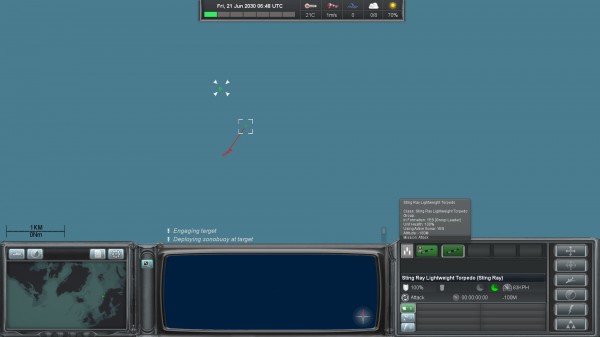
All of that may sound difficult, but I didn’t have too much trouble, as the extremely slow pace of Naval War: Arctic Circle helps alleviate all issues I had involving losing track of units both friendly and hostile. In fact, when I did misplace any units, it was often because they hadn’t moved quite far enough away from the carrier they launched from and the two models were blending together on the map. When I say the game is slow paced, I really mean slow paced. Without time compression, I’d wager each of the tutorial segments could take up to 20 minutes, most of which consists of waiting for your units to move across the screen or engage enemies. Everything moves at a snail’s pace, and although the game certainly encourages slow and tactical play, time compression is essential to prevent short skirmishes from lasting an eternity. Luckily there are easily accessible features in place for that, but certain events like a missile firing bring the time compression back to the default creep, something that can get mildly irritating when multiple missiles are being launched at once.
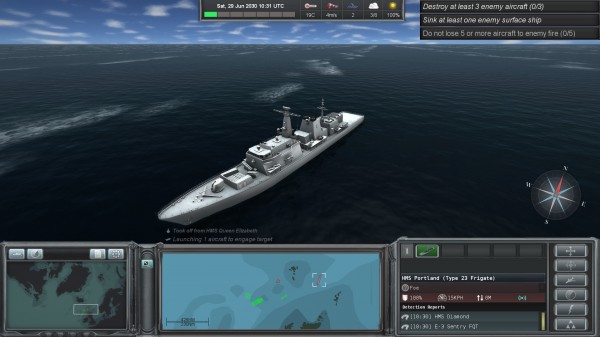
That’s about where the game’s handholding stops, though. Alerts will pop up at the bottom of your screen when units get destroyed or begin to engage an enemy, and some will start evasive maneuvers automatically when attacked, but for the most part units will sit there and get destroyed without player action. I’m assuming that that’s an intentional design decision, but it can be a little off-putting for a new player to mouse back to an area and find all your units destroyed after only a few moments off-screen. Unfortunately, that’s not my only issue with the game.
Throughout, Naval War: Arctic Circle feels like it’s lacking a fair amount of polish, ranging from godawful aesthetics to more serious issues such as the lack of a save option in scenarios. In the case of the former, I’ll come right out and say it: Naval War: Arctic Circle is not a looker. Most battles take place on a 2D map view, which looks fine, but there is a 3D option where you can see your units move, fire, and explode in a real time view. Unfortunately, that 3D view looks absolutely terrible. Explosions appear to be out of the original Command and Conquer, and although the various ships, planes, helicopters, and submarines are actually modeled quite well, they’re left floating on a terrible ocean or horizon of what appears to be a single land or water texture tiled across the landscape. The menus and comic book style cutscenes look equally poor, and the win/loss screen is one of the worst I’ve seen in recent memory, with stats and multiple different fonts pasted over an image of fireworks.
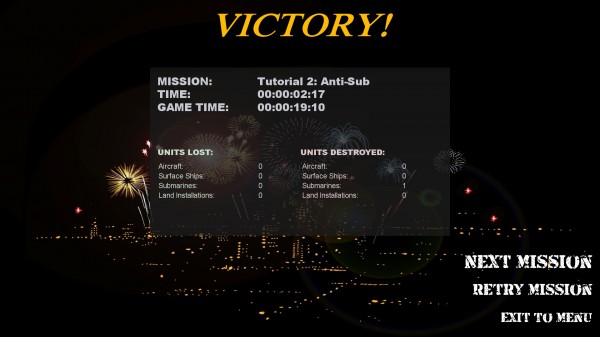
It’s a shame, too, because the 2D view and interface throughout, although not particularly pretty, is very functional and easy to navigate. The map view does a great job of letting you know where all your units are, and although I could’ve used a sidebar detailing every unit available similar to Sins of a Solar Empire, I never had too much trouble with the 2D view or interface. Ordering my units around was fairly easy, and even getting them to do more complex tasks such as deploy sonar or buoys was clearly mapped out by the game. Most of the interface looks fine, and although the aforementioned lack of an ability to save mid-battle doesn’t help with the longevity of the battles, it’s not a gamebreaking issue by any means.
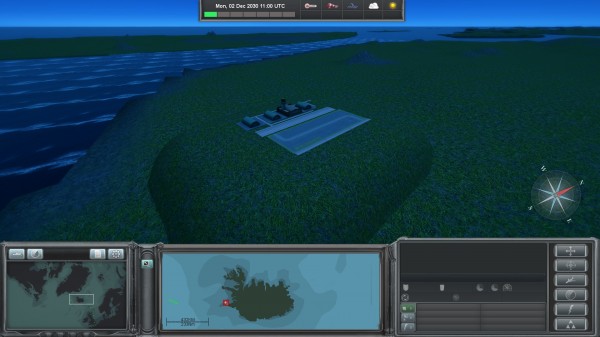
Naval War: Arctic Circle is by no means a bad game, though. The presentation is shaky throughout, and the engine or graphics won’t be bringing any brand new gaming rig to its knees anytime soon, but for those willing to overlook its quirks and occasional shoddy texture, there’s actually a pretty impressive game beneath the surface. Naval War: Arctic Circle is a nice mix of Company of Heroes or Men of War style real-time strategy with a few more grand tactics thrown in, and for a Paradox strategy game it’s remarkably accessible. I can’t say it’s easy, and I can’t say I had fun during every minute of it, but presentation issues aside, you could do a whole lot worse than Naval War: Arctic Circle if you’re looking to scratch your naval strategy itch.

